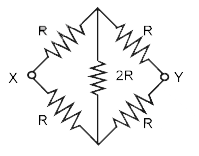In the following circuit if VAB=4V, then the value of resistance X in ohm's will be:- 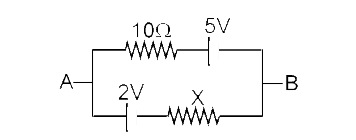
5
10
15
20
The correct Answer is:D
Step by step video & image solution for In the following circuit if V_(AB)=4V, then the value of resistance X in ohm's will be:- by Physics experts to help you in doubts & scoring excellent marks in Class 12 exams.
Updated on:21/07/2023Topper's Solved these Questions
- CURRENT ELECTRICITYBOOK - MOTIONCHAPTER - CURRENT ELECTRICITYEXERCISE - EXERCISE -1 (OBJECTIVE PROBLEMS NEET)
64 Videos
- CURRENT ELECTRICITYBOOK - MOTIONCHAPTER - CURRENT ELECTRICITYEXERCISE - EXERCISE -2 (OBJECTIVE PROBLEMS NEET)
41 Videos
- CONSTRAINED MOTION BOOK - MOTIONCHAPTER - CONSTRAINED MOTION EXERCISE - EXAMPLES
12 Videos
- ELASTICITYBOOK - MOTIONCHAPTER - ELASTICITYEXERCISE - EXERCISE -3
60 Videos
Similar Questions
Knowledge Check
If VAB=4V in the given fig are, then resistance χ will be
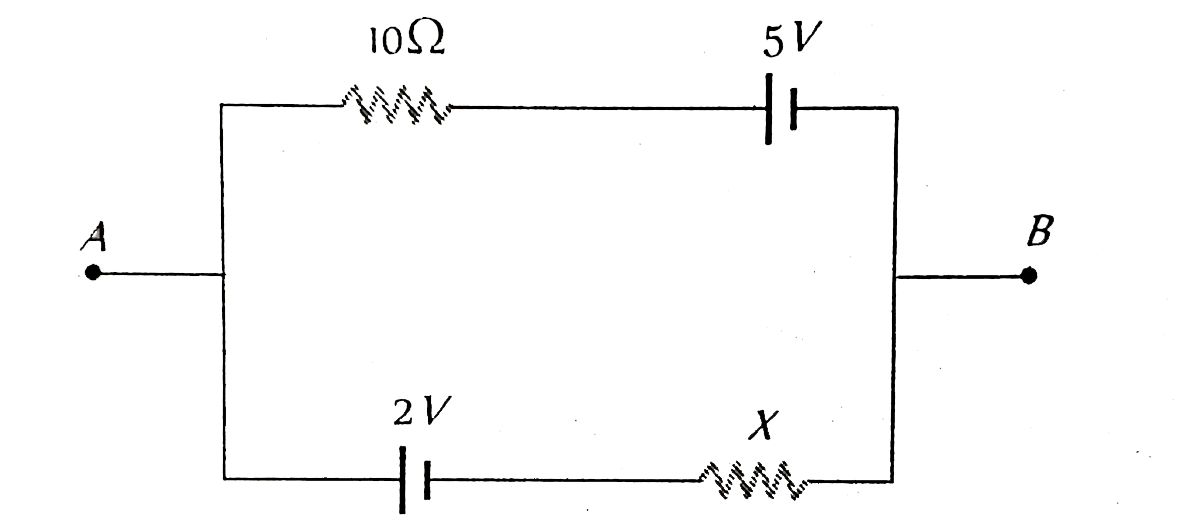 A5ΩB10ΩC15ΩD20Ω
A5ΩB10ΩC15ΩD20ΩFor the circuit shown figure answer the following questions
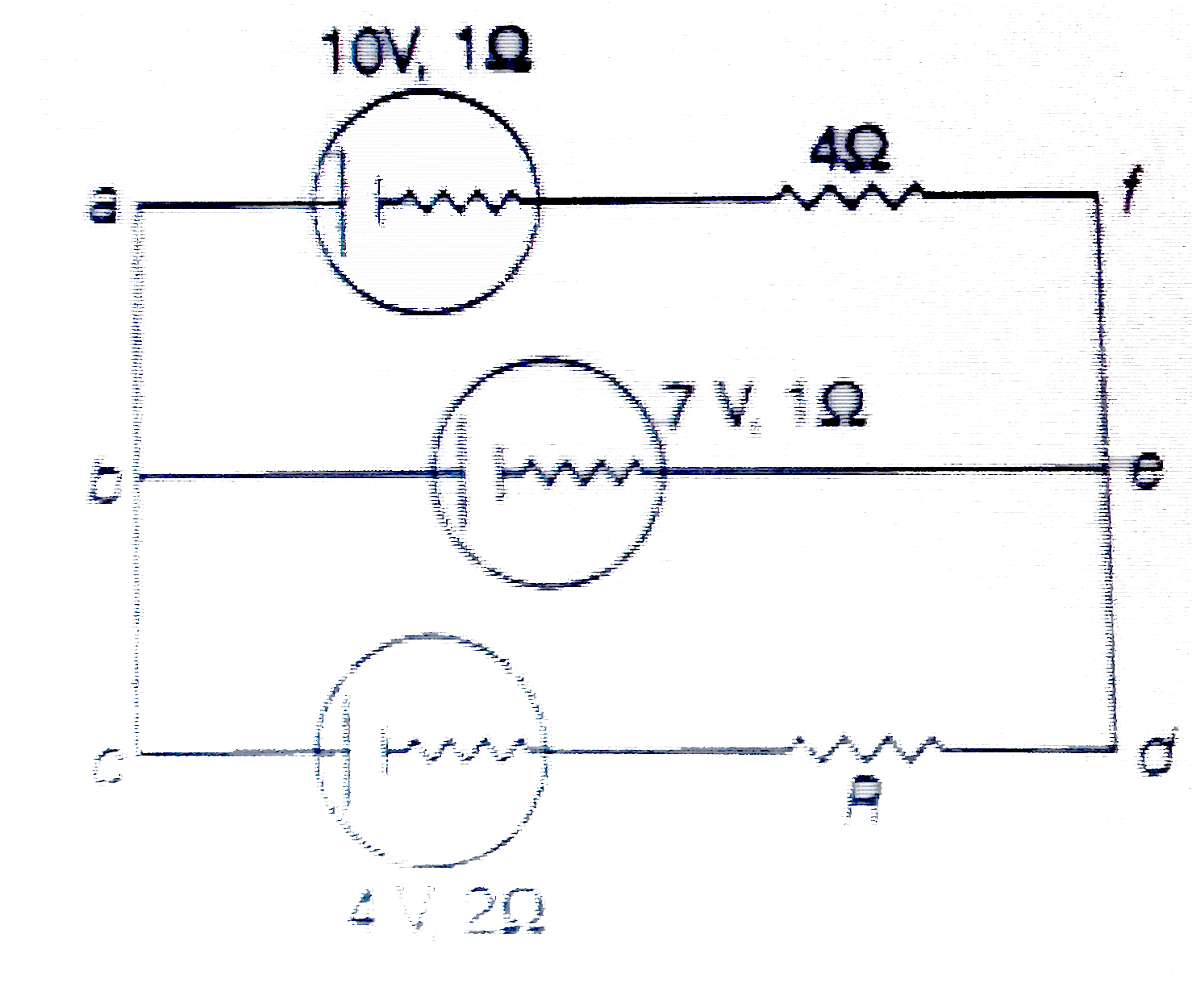
For the above value of resistance, the potential difference across the terminals of the battery of emf 10 V, 7 V and 4 V are respectively.A10.6 V, 7 V, 2.8 VB9.4 V, 7 V, 5.2 VC9.4 V, 0, 5.2 VD10.6 V, 0, 2.8 VFind the value of VAB.
 A10 VB20 VC30 VDNone of these
A10 VB20 VC30 VDNone of these
In the shown circuit the following battery is of emf 4V and internal resistance 8Ω. Find the potential difference between points x and y as shown in the circuit.

View SolutionTwo cells, having emfs of 10 V and 8 V, respectively, are connected in series with a resistance of 24Ω. in the external circuit. If the internal resistances of each of these cells in ohm are 200% of the value of their emi's, respectively, find the terminal potential difference across 8 V battery
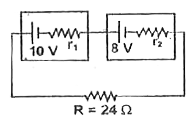
View SolutionA voltmeter has a resistance G and range V. Calculate the resistance to be used in series with it to extend its range to nV.
View SolutionIn the circuit shown in figure, when the input voltage of the base resistance is 10 V, Vbe is zero and Vce is also zero. Then

View SolutionIn the circuit as shown, VA−VB=V. The resistance of each wire AB, AC, etc are shown in the figure. Find the current in AC.
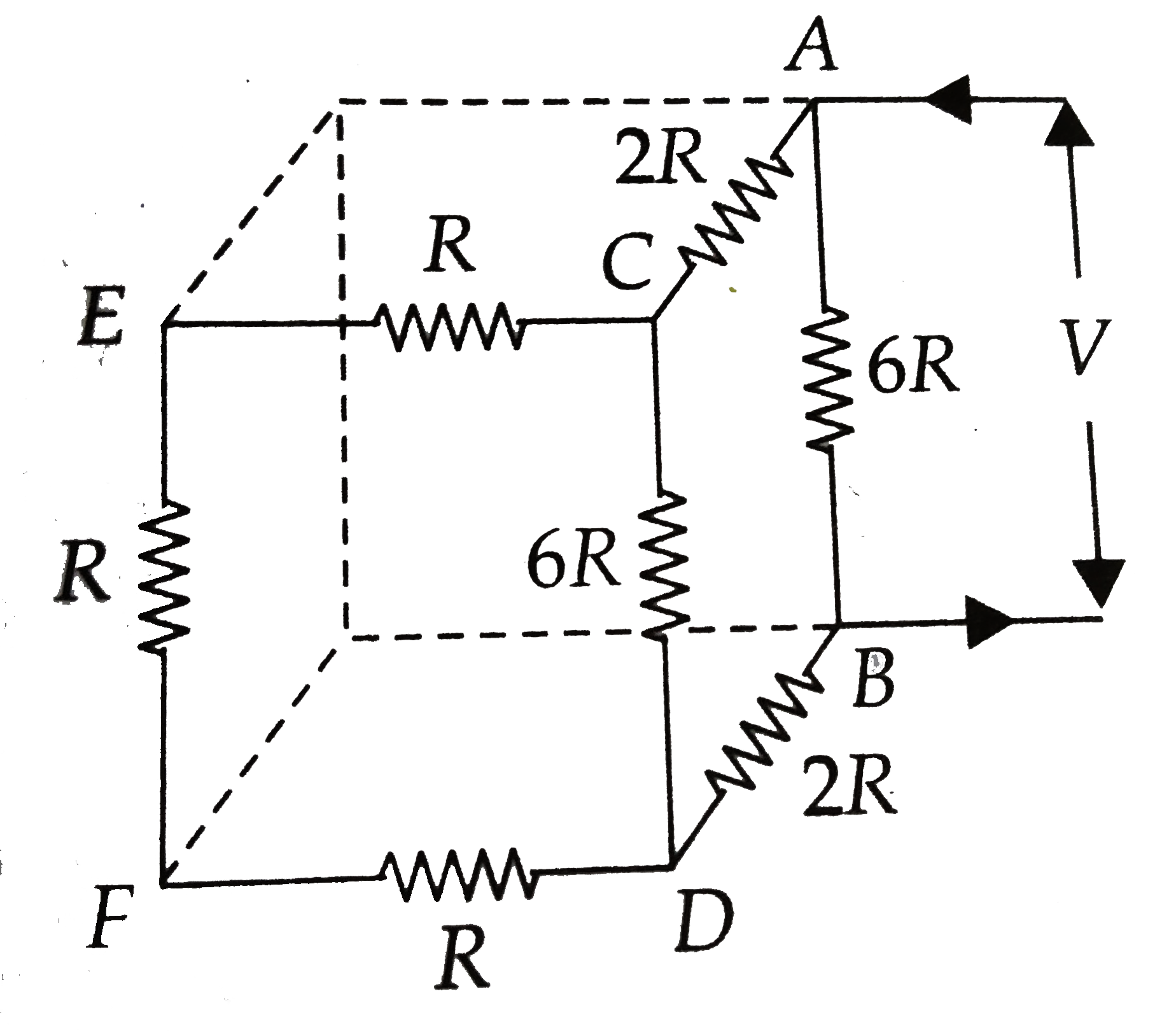
View Solution

